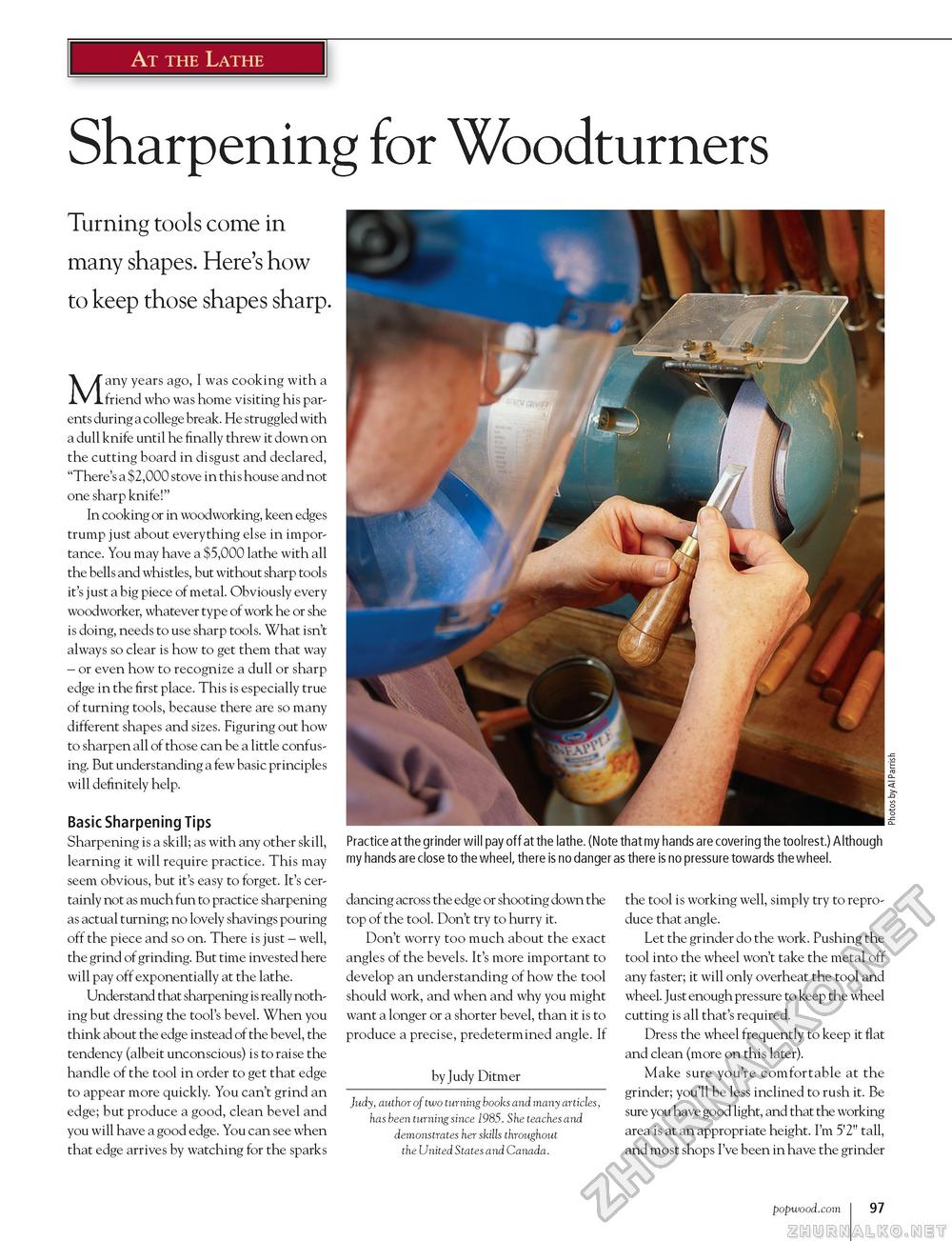Popular Woodworking 2004-11 № 144, страница 98
At the Lathe Sharpening for Woodturners Turning tools come in many shapes. Here's how to keep those shapes sharp. Many years ago, I was cooking with a friend who was home visiting his parents during a college break. He struggled with a dull knife until he finally threw it down on the cutting board in disgust and declared, "There's a $2,000 stove in this house and not one sharp knife!" In cooking or in woodworking, keen edges trump just about everything else in importance. You may have a $5,000 lathe with all the bells and whistles, but without sharp tools it's just a big piece of metal. Obviously every woodworker, whatever type of work he or she is doing, needs to use sharp tools. What isn't always so clear is how to get them that way - or even how to recognize a dull or sharp edge in the first place. This is especially true of turning tools, because there are so many different shapes and sizes. Figuring out how to sharpen all of those can be a little confusing. But understanding a few basic principles will definitely help. Basic Sharpening Tips Sharpening is a skill; as with any other skill, learning it will require practice. This may seem obvious, but it's easy to forget. It's certainly not as much fun to practice sharpening as actual turning; no lovely shavings pouring off the piece and so on. There is just - well, the grind of grinding. But time invested here will pay off exponentially at the lathe. Understand that sharpening is really nothing but dressing the tool's bevel. When you think about the edge instead of the bevel, the tendency (albeit unconscious) is to raise the handle of the tool in order to get that edge to appear more quickly. You can't grind an edge; but produce a good, clean bevel and you will have a good edge. You can see when that edge arrives by watching for the sparks Practice at the grinder will pay off at the lathe. (Note that my hands are covering the toolrest.) Although my hands are close to the wheel, there is no danger as there is no pressure towards the wheel. dancing across the edge or shooting down the top of the tool. Don't try to hurry it. Don't worry too much about the exact angles of the bevels. It's more important to develop an understanding of how the tool should work, and when and why you might want a longer or a shorter bevel, than it is to produce a precise, predetermined angle. If by Judy Ditmer Judy, author of two turning books and many articles, has been turning since 1985. She teaches and demonstrates her skills throughout the United States and Canada. the tool is working well, simply try to reproduce that angle. Let the grinder do the work. Pushing the tool into the wheel won't take the metal off any faster; it will only overheat the tool and wheel. Just enough pressure to keep the wheel cutting is all that's required. Dress the wheel frequently to keep it flat and clean (more on this later). Make sure you're comfortable at the grinder; you'll be less inclined to rush it. Be sure you have good light, and that the working area is at an appropriate height. I'm 5'2" tall, and most shops I've been in have the grinder popwood.com 97 |








